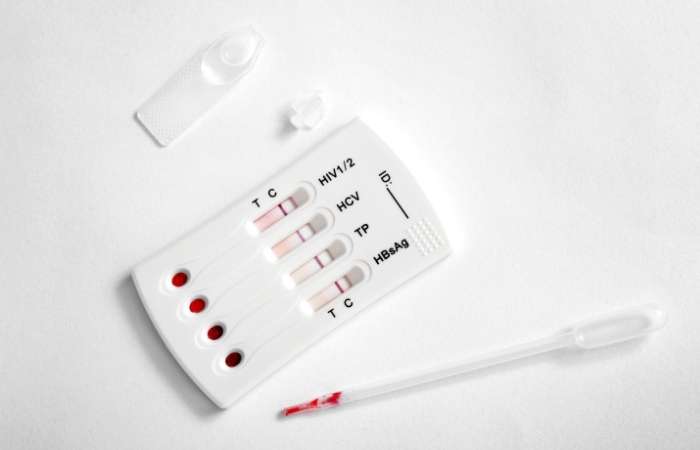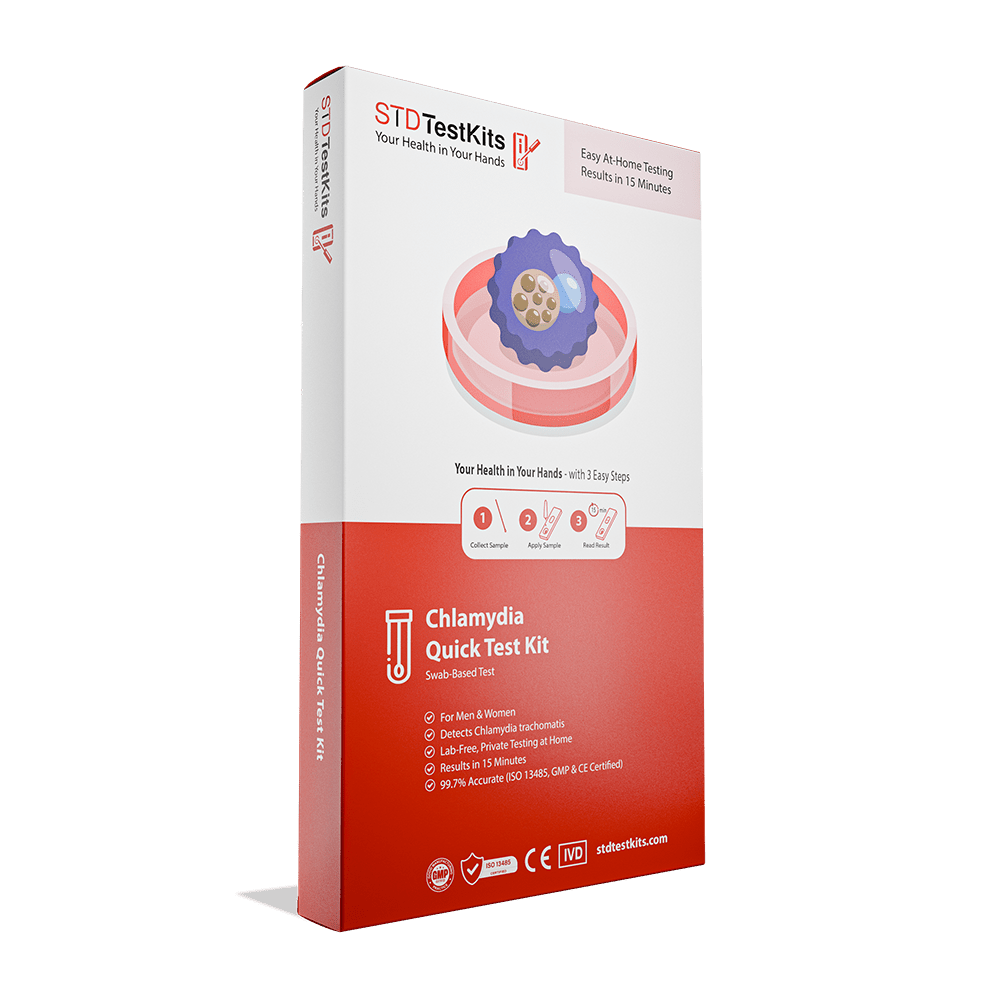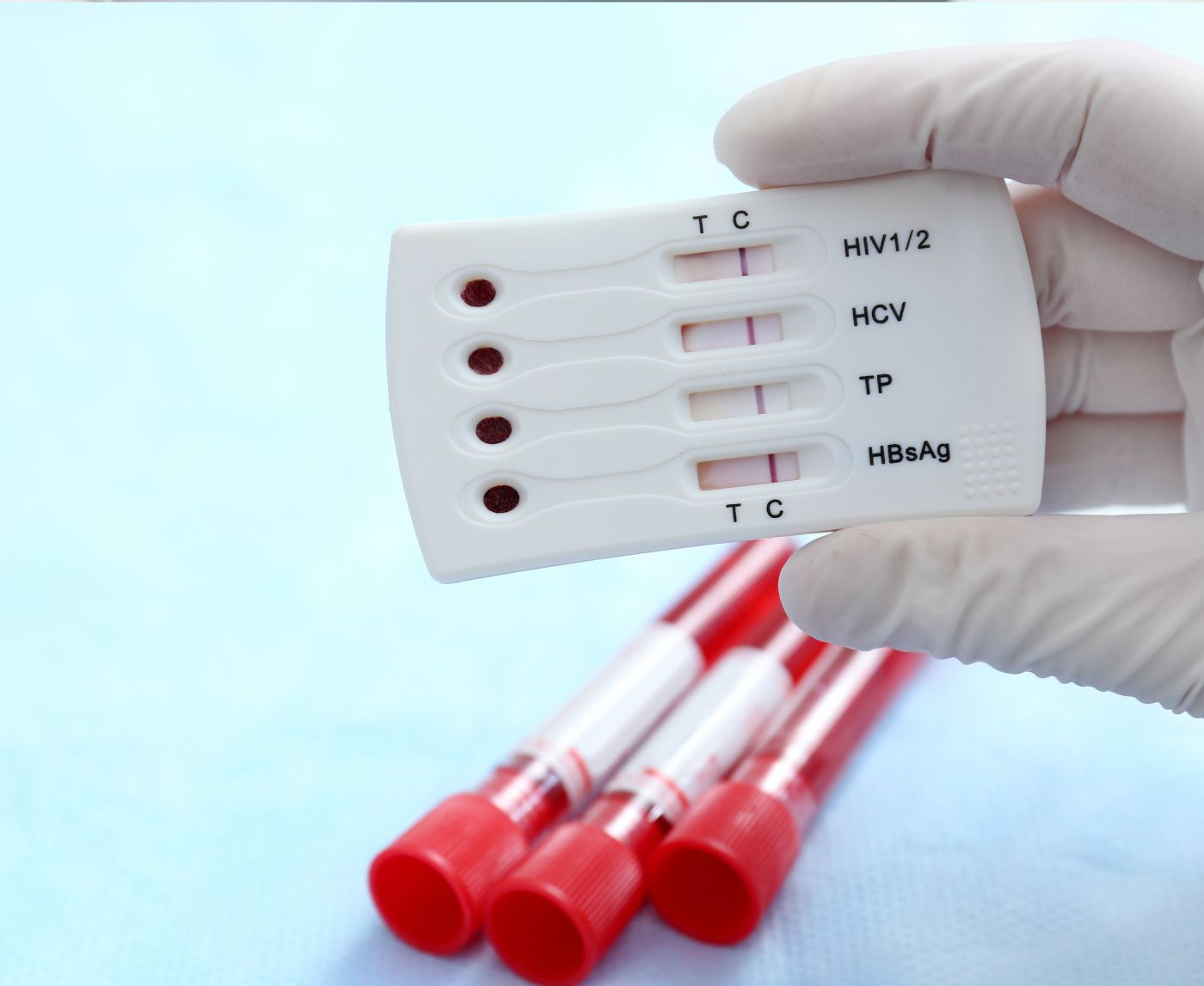Think You Have HIV? Why Testing Too Early Can Backfire
Quick Answer: The best time to test for chlamydia is around 14 days after exposure. Testing earlier, between days 5 and 13, may still detect it, but could miss early infections. A retest is often recommended if you tested before day 14.
Why This Timing Guide Could Save You From a False Negative
This article is for anyone who’s had a recent hookup, experienced condom failure, or just realized a partner wasn’t as honest as they said. It’s also for folks with no symptoms at all, because up to 70% of people with chlamydia won’t feel a thing in the early days.
We’re here for the anxious scrollers, the late-night Googlers, and the people who are trying to do the right thing but aren’t sure what that is. Whether you're using an at-home test or considering a clinic visit, the decision to test should be guided by timing, not just anxiety. And if you already tested and feel unsure about the results, we’ll break down when to retest, too.
This is about protecting your health, your partners, and your peace of mind. No judgment. Just clarity.

People are also reading: HIV Test Errors and Faint Lines: How to Know What’s Real
What Counts as a Chlamydia Test, and Why It Matters
The gold standard for chlamydia testing is a NAAT (nucleic acid amplification test), which detects bacterial DNA. These are used in clinics, mail-in lab kits, and many FDA-cleared at-home tests. NAATs are incredibly sensitive, but they still rely on timing to be accurate.
Tests can be done using a urine sample or a swab (vaginal, cervical, urethral, or rectal). Most at-home kits offer urine-based testing for people with penises, and vaginal swabs for those with vaginas. The type of test doesn’t change the timing, what matters is when the bacteria becomes detectable in your body after exposure.
Want to test yourself in a private way? STD Test Kits sells private, accurate chlamydia test kits that ship quickly and keep your information safe.
Window Period vs Incubation: Don’t Confuse Them
Let's clear up a common misunderstanding. The incubation period is the time it takes for symptoms, if there are any, to show up. The window period is the time it takes for a test to be able to find the infection with confidence. You can spread the disease even before you show signs of it, and you can test negative during the window even if you are infected.
The window period for chlamydia usually starts about five days after exposure, but the best time to find it is after fourteen days. That means that if you test on day 6 and get a negative result, you could still have the infection; it just hasn't gotten strong enough to be found yet.
Table 1. Chlamydia test timing after exposure, showing detection reliability based on time elapsed.
“I Tested Too Early, and It Nearly Cost Me My Relationship”
Amina, 27, took a chlamydia test five days after a one-night stand. She felt guilty and scared, so she tested as soon as she could get her hands on a kit. It came back negative. She thought she was in the clear.
“I told my partner I was clean. But two weeks later I started feeling off, vaginal irritation, spotting. I tested again and it was positive. He was furious I hadn’t waited.”
Early testing feels proactive, but it can backfire if you rely on that result. That’s why experts often recommend a follow-up test at the 14-day mark, even if the first test was negative.
Different Exposure Scenarios, And What They Mean for Timing
Not all exposures are equal. The kind of contact you had, and what body parts were involved, can affect your infection risk and testing timeline. Let’s walk through a few common scenarios:
Unprotected Vaginal Sex With a New Partner
This is one of the highest-risk situations for chlamydia transmission. If you had penis-to-vagina contact without a condom, testing is strongly advised, even if you feel fine. Wait at least 14 days for a reliable result. Testing earlier is possible but should be followed up with a second test if symptoms show up or for peace of mind.
Protected Sex But the Condom Broke
If the condom slipped or broke during penetration, risk rises, especially if there was ejaculation. Test at the 14-day mark, and monitor for symptoms like discharge or pelvic pain. If the broken condom led to panic-testing within the first week, retest after day 14.
Oral Sex Only
Chlamydia can infect the throat, though it’s less common than genital infection. If you gave or received oral sex with no barrier, there’s still a possibility of transmission. Throat swabs are less routinely offered at clinics but may be included in comprehensive testing. Consider testing at 14 days, especially if your partner was untested.
You Just Found Out a Partner Tested Positive
If an ex or current partner informs you they tested positive for chlamydia, you should test immediately to start the process, and again at day 14 if the initial test was within the window. You may also be eligible for expedited partner therapy (EPT), where you’re treated without a doctor’s visit. Check your local health department’s rules.
You’re Testing for Peace of Mind After a Risky Weekend
Let’s say it was a party weekend, and things got blurry. Even without specific symptoms or known exposure, getting tested at the right time can protect you and your future partners. Wait 14 days from the last risky encounter to reduce the chance of a false negative, and remember that testing is care, not punishment.
At-Home, Mail-In, or Clinic Testing: What’s the Difference?
Today’s options for chlamydia testing are wider than ever. Here’s how to decide which one works best for your situation.
Table 2. Overview of chlamydia test types and when they make the most sense for your lifestyle and risk level.
If you’re leaning toward privacy and control, an FDA-cleared test can offer a quick answer. For even more accuracy, a mail-in NAAT combines the best of both worlds, professional lab results without the awkward clinic visit.
How to Avoid False Negatives and False Positives
There are limits to even the best tests. What is the most common problem with chlamydia testing? Testing too early can give false negatives. But results can be hard to understand because of user error, contamination, and bad sample handling. This is what helps:
- Wait until at least day 14 after exposure. Earlier tests may not detect enough bacteria for a positive result.
- Follow the instructions carefully. Whether it’s a urine test or swab, correct sample collection is crucial. Rushing it can cost you clarity.
- Don’t urinate within one hour before a urine-based test. This can dilute the sample and lead to a false negative.
- If symptoms persist, test again. Especially if your first test was within the window period, don’t treat one result as gospel. Repeating the test can protect your health and your partner’s.
- Use high-quality, FDA-cleared test kits. Not all at-home kits are created equal. Opt for ones that meet medical accuracy standards.
If your result feels wrong, or if your gut says something’s off, listen to that instinct. Testing is a tool, not a final answer. Retesting can be the difference between catching an infection early and letting it spread silently.

People are also reading: Can You Trust a Hepatitis B Home Test? Here’s the Truth
Should You Retest? Here’s When It Matters
One of the most common mistakes people make with chlamydia is assuming one test is enough, especially if it was taken too soon after exposure. Here’s when retesting is not just helpful, but essential:
- You tested before day 14: If your result was negative but the test happened within the first two weeks after exposure, it’s possible the bacteria hadn’t multiplied enough to be detected. Experts recommend a retest at or after day 14 to confirm the result.
- You had sex without protection again after the test: If you come into contact with someone new, you should get tested again 14 days later, even if you tested clean before. You can get chlamydia again at any time, and having it once won't make you immune.
- You got treatment for chlamydia: Most guidelines say to test again about three months after treatment to make sure the person hasn't gotten sick again. Some providers say that if you're pregnant, you should get tested again even sooner, like 3–4 weeks after the first test.
- You still have symptoms after a negative result: Discomfort, discharge, or pelvic pain after a negative test might mean the test missed the infection, or that something else is going on. Either way, it’s time to test again and possibly explore other diagnoses.
Return to STD Test Kits anytime you’re ready to test again. Your body’s timeline matters more than anyone else’s calendar.
What If You Test Positive, or Still Feel Off?
First, take a deep breath. Getting a positive chlamydia test result doesn't mean the world is over. It's one of the easiest STDs to treat, and finding it early makes a big difference. Now that you know what to do,
- Get help right away. Most of the time, chlamydia is treated with a short course of antibiotics, like a single dose or a 7-day prescription. Don't skip doses or stop taking them early, even if your symptoms go away
- Tell your partner(s). This part can be uncomfortable, but it’s essential. You don’t have to do it face-to-face. Many public health departments offer anonymous notification services. Some apps and clinics even text them for you.
- Don’t have sex until treatment is complete. This prevents reinfection and protects your partner. Even with meds in your system, transmission is still possible until you’ve finished the course.
- Retest if advised. If you’re under 25, pregnant, or have multiple partners, most health agencies recommend retesting three months later, even if treatment worked the first time.
Mateo, 22, got a positive result from an at-home test. He panicked but followed the kit’s advice to contact a local clinic. After getting antibiotics and informing his partner, they both agreed to retest in a month, and stayed clear.
“It was awkward, but way better than guessing or ghosting”
Privacy, Shipping, and Support, Why It Matters
If you're feeling overwhelmed, remember: You don’t have to go to a clinic to take care of your sexual health. Today’s at-home test options are discreet, fast, and effective.
- Discreet packaging: No logos, no mentions of STDs on the label, just a plain envelope delivered to your mailbox.
- Fast shipping: Most orders arrive in 1–3 business days. You can time your test around travel, your cycle, or your exposure timeline.
- Privacy-first results: Only you see your result. There’s no report sent to your insurance, employer, or partner unless you choose to share it.
- Support if you need it: From instructional videos to live chat, you’re not doing this alone.
Whether you’re living rurally, don’t want to be seen at a clinic, or just need clarity on your own terms, at-home testing is a powerful option. It’s about giving you control over your health and peace of mind when it matters most.
FAQs
1. Can I really test for chlamydia too early?
Yep, and it happens all the time. Think of it like catching someone sneaking into your house. If you check the security footage too soon, you might miss them. The bacteria takes a few days to build up enough for a test to detect it. That’s why experts say the sweet spot for testing is around 14 days after a risky hookup.
2. What if I tested negative but I still feel... off?
Trust your gut. If something doesn’t feel right, discharge, weird smell, burning, spotting, don’t just take one test result as gospel. Especially if you tested early. Retest. Or consider that another infection (BV, trich, or even a UTI) might be playing tricks on you. Either way, your body’s waving a red flag for a reason.
3. How long after sex should I wait before testing?
Ideally? Two weeks. That’s when chlamydia usually becomes detectable. But if you’re spiraling with anxiety, it's okay to test earlier for a baseline, just know you might need to test again later. The key is knowing what a negative means based on timing, not just the result.
4. Is it ever too late to test?
Honestly, no. Even if it’s been months since that risky night, it’s still worth testing. Chlamydia can hang out silently and cause problems later, like pelvic pain, fertility issues, or epididymitis. Late is better than never. Always.
5. Do I need to retest if I already took antibiotics?
Yes, for the most part. Specifically, if you didn't test before you began treatment or if you're not even convinced that your partner was treated as well. And also, if you're younger than 25 or you're pregnant, protocols generally recommend retesting after 3 months, as a safety measure.
6. Can I use a test at home and trust it?
Absolutely, if it’s FDA-cleared and you follow the instructions. Just like any test, timing matters. A test won’t bend time to show results before your body’s ready. But used correctly, it can offer private, fast answers without the clinic drama.
7. Will my test be accurate if I peed right before taking it?
Tricky one. If it's a urine-based test, try to hold your pee for at least an hour beforehand. Why? Because your first-catch urine is where the bacteria likes to hang out. If you go right before the test, you might wash it away, and miss it.
8. Can chlamydia go away on its own if I ignore it?
Nope. It might go quiet, but it doesn’t disappear. Left untreated, it can cause serious long-term issues, even if you feel totally fine now. This isn’t something to outwait. It’s something to outsmart.
9. Is testing different during pregnancy?
The process is the same, but the stakes are higher. If you're pregnant, testing for chlamydia is a must. Untreated infections can lead to complications for both you and your baby. The test works the same way, urine or swab, but you might be advised to test earlier and retest before delivery.
10. My partner tested positive. Why did mine come back negative?
This happens more than people think. Maybe you tested too early. Maybe you didn’t catch it (lucky you). Or maybe your sample collection was off. If your partner’s positive, retest yourself at day 14 or talk to a provider about just getting treated too. It’s not about blame, it’s about making sure no one gets left behind with a silent infection.
You Deserve Answers, Not Assumptions
Testing for chlamydia isn’t just about catching an infection, it’s about taking charge of your health, protecting your partners, and stepping into clarity. Whether you’re weeks out from a risky hookup or just learning your partner tested positive, you have options. The right time to test is the one that gives you answers, not more anxiety.
How We Sourced This Article: We combined current guidance from leading medical organizations with peer-reviewed research and lived-experience reporting to make this guide practical, compassionate, and accurate. In total, around fifteen references informed the writing; below, we’ve highlighted some of the most relevant and reader-friendly sources.
Sources
1. Mayo Clinic – Chlamydia Overview
3. Planned Parenthood – Chlamydia
4. CDC — Chlamydial Infections Treatment Guidelines
5. CDC — Getting Tested for STIs
6. “Timing of Chlamydia Tests” — BMJ STI
About the Author
Dr. F. David, MD is a board-certified infectious disease specialist who works to stop, diagnose, and treat STIs. He combines clinical accuracy with a straightforward, sex-positive attitude and is dedicated to making his work available to more people, both in cities and in rural areas.
Reviewed by: Melanie Zhou, MPH | Last medically reviewed: October 2025
This article is for informational purposes and does not replace medical advice.






